Among the most challenging transitions in early childhood is when children start staying away from their parents for longer periods of time than they have been used to till then. For Educators caring for babies and toddlers who are having a particularly bad time leaving their parents, the following article provides information on What Is Separation Anxiety, Factors that Can Cause Separation Anxiety, Separation Anxiety Signs, How To Manage Separation Anxiety When To Seek Help and more.
What Is Separation Anxiety?
At the start, it is important to understand that separation anxiety is a normal part of childhood development. Most babies and toddlers will experience it at some point in the early years – indeed distress at leaving parents is a sign that the child shares a secure attachment with parents and does not like the prospect of being away from them. However, the behaviours associated with separation anxiety can be particularly challenging, as they can range from clinginess and crying to full-on sobbing and hysterical distress. What’s more, separation anxiety in a baby can be quite different from that in an older child besides varying from one child to another even in the same age group.
Separation anxiety in babies - In the first months of life, babies simply see themselves as an extension of their mother or primary caregiver. But as they grow, from around 4-5 months onwards, they develop very strong attachments to parents and they also learn object permanence, i.e. the concept that you still exist even if they can’t see you. Additionally, babies have no concept of time – so whether a parent leaves them for one minute or one hour, it feels the same to them. All this builds up separation anxiety which generally peaks at around nine months. However, babies can differ in how long they experience such anxiety – from a few weeks to a few months while some babies may not experience it at all!
Separation anxiety in toddlers – the next stage when young children commonly demonstrate separation anxiety behaviours is at around fifteen months – in fact even if a child did not have separation anxiety as an infant, they can still experience it as a toddler. During this stage, separation anxiety can be a combination of two things. The first is them expressing fear about being apart from their parents. The second is them expressing an opinion that they don’t want you to leave. Just like with babies, separation anxiety in toddlers is normal and it usually eases over time.
What Other Factors Can Cause Separation Anxiety
Apart from the developmental factor, separation anxiety can be triggered in young children by certain changes, new situations or feelings that make them want to cling to their parents even more closely. These may include:
- A new baby in the family
- A new educator at child care
- Moving house
- The loss of a close family members
- Parental stress
Separation anxiety can also get worse when a child is hungry, tired or feeling unwell.
Separation Anxiety Signs
In babies, signs of separation anxiety usually include:
- Crying when a parent leaves the room.
- Being very clingy, especially in new situations or around new people.
- Waking during the night crying.
- Resisting falling asleep or having trouble sleeping if a parent isn’t close by.
In toddlers, signs of separation anxiety generally include:
- Throwing tantrums when a parent leaves the room
- Resisting or fighting against other caregivers if a parent is leaving.
- Fearful or restless behaviour.
How To Manage Separation Anxiety
Get to know the child
Before a child joins the centre and your room, make sure that you are first introduced to the child. This can be done by with enrolment interviews and orientation visits when a parent is allowed to stay with the child for a few days at the centre as the child gets familiar with the surroundings and the people who’ll be caring for them. As the classroom teacher, continue to be the primary point of contact for the child so that they are able to develop a sense of trust and a feeling of safety with you. This will also help you get to know the parents and establish a routine and rhythm for the handover
Support goodbye rituals
One of the most effective ways to manage difficult transitions is with regular routines. When children know what to expect, it is much easier for them to manage situations, especially changes in surroundings and people. So support a child and their family in creating a goodbye ritual to be practised during drop-off time. This could be anything that has special meaning for the child and parents, like a little song or a hug or kiss and a wave. However, the ritual should be always done in the same order and manner so as to create familiarity and comfort around saying goodbye. Also encourage families to enrol their child for a minimum of two consecutive days at your centre, so that the child feels a sense of connection and belonging to people and places, thereby reducing separation anxiety.
Avoid prolonged goodbyes
While routines and rituals help children and families deal with separation anxiety, ensure that they are neither drawn out nor take place too long before the actual moment of separation. Help parents say goodbye, comfort their children if they are upset and then leave promptly.
Encourage honesty
Explain to parents that it is not a good idea to sneak away and hope that the child won’t notice. Notice they will and in the long run, such underhand strategies may do more harm, not to mention the distress that the young child will experience. Instead, encourage parents to be honest; having them tell the child that they are leaving and that they will be back will go a long way in building trust, thereby lessening separation anxiety over time.
Create calming routines
Set up a routine that is calm and quiet for the arrival process. Play some gentle music for babies or read a story to get toddlers settled before doing attendance. The morning rush to get to the centre can, in itself, be overwhelming, and arriving at a peaceful space can help children deal better with separation from parents.
Develop attachment with babies
To help babies deal with separation anxiety, it is necessary for daycare staff to build secure attachments. This can be done by spending time holding and cuddling the baby each day, and comforting them when they are afraid or upset
Offer choice
Yet another way of helping toddlers settle down is to offer options for different types of activities they may wish to do before the morning routine commences. This will require the child to focus on the mental task of decision-making and thereby help break the loop of anxious thoughts. You can also offer an anxious child a very special helping role, like handing out glue sticks, taking down books from shelves or being the “login” helper at the computers. At the same time though, be ready to offer them quiet or alone time as well, as some children may prefer to observe and adjust at their own pace.
Even for babies, you can look for ways to build autonomy, like giving them the opportunity to crawl away from the caregiver into another safe room, while maintaining supervision from nearby. This will help babies understand that they can themselves move away from the sight of their caregivers but upon returning, will always find them waiting.
Use visual timetables
Having a visual timetable often helps children with anxiety anticipate and plan for transitions and routines throughout their day. Put up several stickers or magnets depicting parts of an everyday routine like snacks, singing, naps and so on. As each task or activity is completed, the child can put the sticker or magnets on a schedule panel – thereby having a tangible way to understand the passage of time and be reassured that at the end of the schedule, their parents will be back. Babies too thrive with routines – like a predictable schedule of naps, feeds and play – as well as supportive rituals like singing a song to them during nappy changing times.
Practice and role-play separation
During the day, play games like peek-a-boo with babies or hide and seek with toddlers. Covering and uncovering toys with a blanket is another game that can demonstrate to babies that despite a carer being away from view for some time, they are sure to be back. Encourage parents also to continue such games at home or practice separation with simple actions like leaving your child with another caregiver while they go to the bathroom. By practising leaving and then returning again, adults can help to teach children that they will come back.
Acknowledge the child’s feelings
Separation anxiety is part of early childhood development and it’s normal for children to get upset when leaving their parents. Brushing it off as trivial or worse, as a sign of weakness isn’t going to help at all and indeed may lead to added distress of guilt or shame for the child. Instead, let the child know it is ok for them to miss their parents; acknowledge that you can see they’re upset and reassure them that their parents will be back.
When To Seek Help
It is possible that despite your best efforts and even the family’s cooperation, a child may need professional help to manage their anxiety. The sign that indicates such a line of action include:
- Ongoing refusal to go to the service
- Excessive fears or worries, even for things like leaving the house.
- Regular complaints of feeling unwell.
- Social withdrawal.
- Clinginess of tantrums inconsistent with their age.
- Panic attacks.
- Anxiety that is intense, prolonged and interferes with daily life.
If you think a child needs help, work with the parents to reach out to a paediatrician or local community health nurse can for support and referral if required.
Further Reading
Supporting Families With Separation Anxiety In Childcare - The following article provides information on Dealing With Separation Anxiety, Orientation Programs, Supporting Parents With Separation Anxiety and more.
Separation Anxiety In Children - The following article provides information on the Normal Development of Separation With Anxiety, Considering Factors Of Separation Anxiety, Supporting Children and more.
References:
- Separation Anxiety In Babies and Children, Gowrie NSW
- Separation Anxiety Tips Teachers, Teach Starter
- Separation Anxiety For Babies, Medical News Today


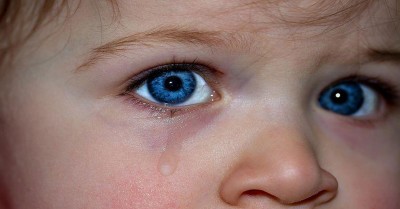
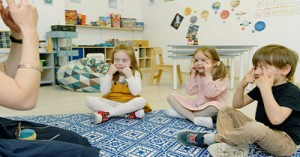
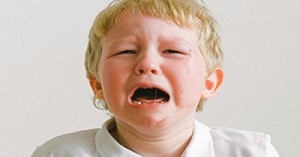
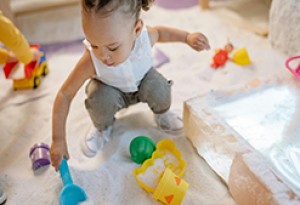
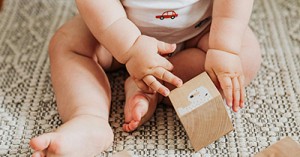
 As an Educator in Australia, your pay rate falls under the Children’s Services Award 2010. This award states the minimum amount that an employer can
As an Educator in Australia, your pay rate falls under the Children’s Services Award 2010. This award states the minimum amount that an employer can When working as a qualified Early Childhood Teacher (with a university degree) within a service, your rate of pay will come from the Educational Services
When working as a qualified Early Childhood Teacher (with a university degree) within a service, your rate of pay will come from the Educational Services When working as a Diploma Qualified Educator your pay rate is from the Children's Services Award 2010. This Award states your minimum rate of pay
When working as a Diploma Qualified Educator your pay rate is from the Children's Services Award 2010. This Award states your minimum rate of pay When working as a Cert 3 Qualified Educator, your pay rate is from the Children's Services Award 2010. This Award states your minimum rate of
When working as a Cert 3 Qualified Educator, your pay rate is from the Children's Services Award 2010. This Award states your minimum rate of Educational Leaders play a crucial role in their early childhood service by ensuring that the educational program aligns with best practices and supports the holistic
Educational Leaders play a crucial role in their early childhood service by ensuring that the educational program aligns with best practices and supports the holistic In early childhood education and care, ratios are more than a technicality—they are a frontline safeguard. Every child deserves responsive supervision, emotional connection, and developmental
In early childhood education and care, ratios are more than a technicality—they are a frontline safeguard. Every child deserves responsive supervision, emotional connection, and developmental With the new national child safety reforms kicking in on 1 September 2025, early childhood services like yours have a real opportunity to lead the
With the new national child safety reforms kicking in on 1 September 2025, early childhood services like yours have a real opportunity to lead the Here’s a comprehensive Mobile Phone and Smart Watch Policy tailored for early childhood education and care (ECEC) services in Australia, aligned with the latest 2025
Here’s a comprehensive Mobile Phone and Smart Watch Policy tailored for early childhood education and care (ECEC) services in Australia, aligned with the latest 2025 The Sea of Fish Challenge is a national initiative that invites children, educators, families, and communities to create and display fish artworks as a symbol
The Sea of Fish Challenge is a national initiative that invites children, educators, families, and communities to create and display fish artworks as a symbol Across the early childhood education and care sector, educators are sounding the alarm: current staffing ratios are insufficient to deliver safe, meaningful, and developmentally appropriate
Across the early childhood education and care sector, educators are sounding the alarm: current staffing ratios are insufficient to deliver safe, meaningful, and developmentally appropriate


